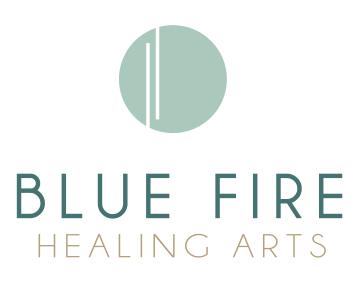The Yin-Yang Structure of the Body
The principle of yin-yang is the philosophical basis of all aspects of traditional Chinese Medicine including structural, organic, functional, and mental-emotional. This article will focus on the structural aspect.
Fundamental Duality
Yin-yang is the fundamental duality of everything in the universe. The Chinese word yin means the “shady side”, yang means the “sunny side”.
Yin is dark, internal, receptive, hidden, in shadow, soft, heavy, cool, wet, in closer proximity to the Earth.
Yang is bright, external, active, exposed, lit-up, hard, light-weight, warm, dry, in closer proximity to Heaven.
Taijitu

Yin-yang theory is foundational in Taoist cosmology and in Chinese medicine theory. The symbol for yin and yang is called taijitu, showing the universal polarity in a constant state of harmonious movement. The taijitu is the combination of two identical intertwined fish-like shapes, black for yin, white for yang, with the seed of each present within the opposite.
Relativity and Polarity
Everything has a relative yin-yang nature. Nothing is ever pure yin or pure yang.
Yin and yang are mutually dependent, they exist always in relation to each other. There can never be yin without yang and vice-versa.
Yang and yin are opposites, but each contains the seed of the other. At high noon, when the day begins its descent toward darkest midnight; yang transforming into yin. In the depths of winter the seasons start to shift toward spring and summer; yin transforming into yang.
Yin-Yang Structure of the Body
Yin-yang in the body is traditionally illustrated by a farmer bending over, working in the field. The back and head are exposed to the sun, yang, while the chest and abdomen and feet are in shadow, yin.
Understanding the relative yin-yang structure of the body is important for diagnosing and treating musculoskeletal issues such as injuries, chronic pain, and degenerative diseases.
The skin is yang (outer) relative to the internal organs (inner). The head is yang relative to the feet, because the head is closer to the Sun (yang) and the feet are closer to the Earth (yin). The tops of the feet are yang while the soles of the feet are yin etc.
The back of the body including the neck, shoulders, back, and the outer parts of the arms and legs are yang.
The front of the body including the face, chest, abdomen, and inner parts of the legs and arms are yin.
The upper back is yang and the lower back is yin. The chest is yang and the abdomen is yin.
The spinal curves have a relative yin-yang relationship, meaning they balance each other. Natural spinal curves provide important shock absorbance, allowing for complex movement.

The cervical and lumbar curves are anterior, they sink in relation to the rest of the back; yin.
The thoracic and sacral/pelvic curves are posterior, they rise in relation to the rest of the back; yang.
The cervical and thoracic yet more yang in relation to the lumbar and sacral/pelvic because they are higher up on the body, more exposed, and closer to Heaven (ultimate yang).
Relevant to Treatment
The more yin structures tend to suffer from weakness but benefit from being relaxed, such as the abdomen. The more yang structures suffer from tension but benefit from being strong such as the posterior shoulder muscles.
However, yin is not the same thing as deficiency or weakness and yang is not the same thing as excess or tension.
It’s also worth noting that because of the modern Western lifestyle emphasis on sitting, most people would benefit from increased strength and relaxation overall, just to maintain basic structural balance.
Conditions to Consider
Low back pain is often from weakness in the corresponding yin aspect: weak abdominal muscles mirroring the low back.
Low back pain also shows up as tension in the more yang aspects of the spine: the lower thoracic and upper sacral. Address abdominal weakness or coldness, and treat the upper sacral and lower thoracic tension to relieve low back pain.
Upper back pain is yang-on-yang tension, within which a hidden yin weakness can be found.
Releasing the tight trapezius, supraspinatus, and infraspinatus is one part of treatment, but then look for overstretched and weak rhomboids, and instability in the cervical curve. Ribs that are stuck or “out” in the back will often have a corresponding tenderness in the anterior ribs.
Create leverage for treatment of stubborn and guarded upper back pain by treating the anterior sterno-costal area.
Shoulder pain can be an excess type where the joint is very stiff, difficult to move, perhaps inflamed. Look for weakness in the low back, abdomen, or legs that might be contributing to overuse of the shoulder, or may undermining its ability to heal properly.
Shoulder pain that is more “nervy” and weak is a deficient type. The affected shoulder will often present as lower, either on the top of the shoulder joint or in the scapula.
The patient may not want the affected shoulder to be touched or treated. The excess type of tension will often be found on the opposite side of the upper back, especially near the vertebrae and paraspinal muscles.
Treating the Whole Person
Yin-yang diagnosis can go even further for pain conditions, especially with incorporating in-depth channel theory, zangfu treatment, and herbal remedies for maximum benefit.
Yin-yang in the body should be functional and natural, creating a harmony of movement for our lives. When it is pathological we use the same principles of balance to address pain and dysfunction.












 From a Chinese medicine perspective, the organs of the body are not just physical but include functional, emotional, and spiritual aspects.
From a Chinese medicine perspective, the organs of the body are not just physical but include functional, emotional, and spiritual aspects.

